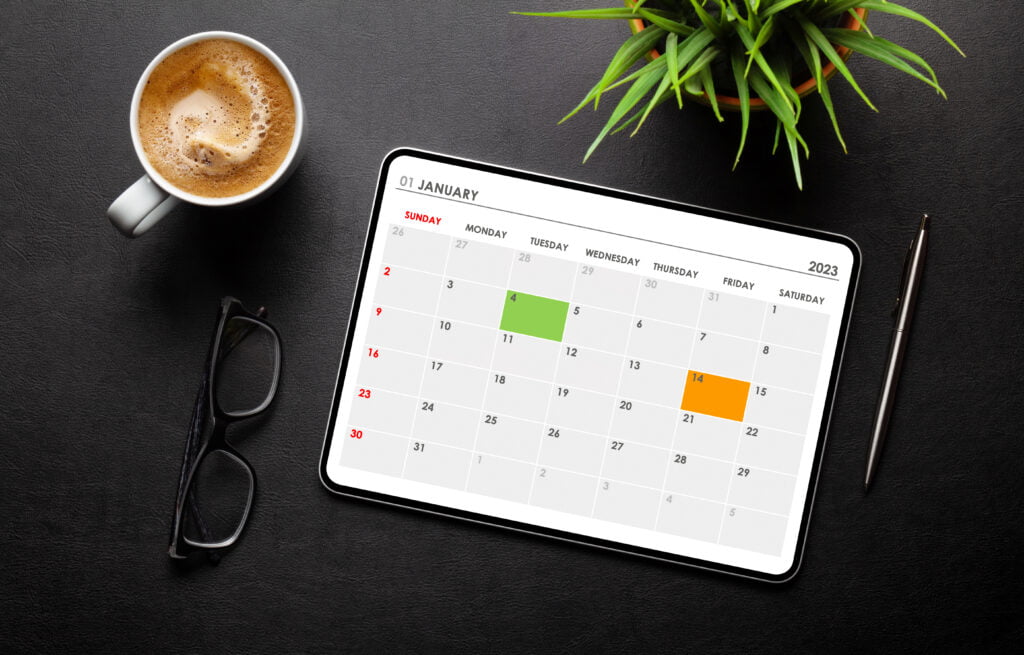So you’ve downloaded a productivity app, excited to finally tackle your to-do list and manage your time more efficiently. But now you find yourself staring at the app, wondering where to even begin. Don’t worry, you’re not alone. Using a productivity app might seem daunting at first, but with a few simple steps, you’ll be harnessing its power in no time. Whether you’re looking to boost your productivity at work or in your personal life, this article will guide you through the essential features and strategies for making the most of your productivity app. It’s time to take control and revolutionize the way you manage your tasks.
Choosing the Right Productivity App
When it comes to choosing the right productivity app, it’s important to first define your needs and goals. Consider what specific tasks or projects you need help with, as well as your overall objectives. Do you need a simple to-do list app, or a more comprehensive project management tool? Defining your needs will make it easier to find an app that aligns with your goals.
Once you have a clear understanding of your needs, it’s time to research different productivity apps. There are countless options available, ranging from basic to-do list apps to robust project management platforms. Take the time to explore various apps and their features. Look for user reviews and ratings to get a sense of how effective and user-friendly the app is. Consider downloading a few different apps to test them out and see which one suits your needs best.
Another important consideration when choosing a productivity app is compatibility and integrations. Think about the other tools and software you use on a daily basis. Will the productivity app seamlessly integrate with your email, calendar, and other essential apps? Compatibility and integrations can greatly enhance your overall productivity and streamline your workflow, so make sure to choose an app that plays well with your existing tech stack.
Setting Up Your Productivity App
Once you’ve chosen the perfect productivity app, it’s time to set it up. The first step is to download and install the app on your device. Whether you’re using a smartphone, tablet, or computer, you can typically find the app in the respective app store for your device. Once downloaded, follow the installation instructions provided by the app.
After the app is installed, you’ll either need to create an account or sign in if you already have one. Creating an account typically involves providing an email address and creating a password. Some apps may offer additional sign-in options, such as using your Google or Apple account.
Once you’re signed in, take some time to customize the app settings to suit your preferences. This may include adjusting the theme or color scheme, setting your preferred language, or configuring notification preferences. Customizing the app settings allows you to tailor the app to your individual needs and make it a more personalized tool for productivity.
Understanding Features and Functionality
Now that your productivity app is set up, it’s important to familiarize yourself with its features and functionality. Spend some time navigating the app interface and getting comfortable with the layout and organization. Most productivity apps have a user-friendly design with intuitive menus and buttons, making it easy to find what you need.
One of the key features of a productivity app is its task and project management tools. These tools allow you to create and manage tasks and projects, set deadlines, assign priorities, and track progress. Familiarize yourself with these features and learn how to effectively use them to stay organized and on top of your workload.
In addition to task and project management, productivity apps often offer features for organizing and prioritizing your tasks. This may include options for creating categories or folders, adding labels or tags to tasks, and setting reminders or due dates. Take the time to explore these features and find the ones that work best for your workflow and organization style.
Managing Time and Schedules
A productivity app can also be a valuable tool for managing your time and schedules. Set reminders and notifications within the app to stay on track and ensure that important tasks or deadlines are not forgotten. By utilizing these features, you can stay organized and avoid unnecessary stress.
Many productivity apps also include a calendar function, allowing you to create and edit events directly within the app. Take advantage of this feature by adding important deadlines, meetings, and appointments to your calendar. This will help you visualize your schedule and ensure that you allocate your time effectively.
If you want to take your time management to the next level, consider using time tracking and Pomodoro techniques. Some productivity apps offer built-in timers or the ability to integrate with external time tracking tools. Experiment with these techniques to find what works best for you and helps you optimize your productivity.
Collaborating and Sharing
If you’re working on a team or collaborating with others, a productivity app can be a game-changer. Many apps offer features that allow you to invite team members or collaborators to join specific tasks or projects. This enables seamless collaboration and ensures that everyone is on the same page.
In addition to collaborating on tasks and projects, productivity apps often have options for sharing documents and files. This can be particularly useful for sharing progress reports, meeting notes, or reference materials. Take advantage of this feature to streamline your communication and make collaboration more efficient.
Finally, productivity apps often offer communication and feedback tools to facilitate collaboration. This may include features such as comments, chat functions, or the ability to leave feedback directly on tasks or projects. Make use of these tools to foster effective communication and ensure that everyone’s input is heard.
Syncing and Backup
To ensure that your productivity app is always up to date and your data is secure, it’s important to enable cloud syncing. Cloud syncing allows your app to sync your data across multiple devices, so you can access it from anywhere. This is particularly useful if you switch between devices throughout the day or work remotely.
While cloud syncing provides a certain level of data backup, it’s still important to back up your data regularly. Most productivity apps offer options for creating backups, either by exporting your data to a file or utilizing built-in backup features. Set a regular schedule for creating backups to ensure that your data is protected in case of any unforeseen issues.
In the unfortunate event that you do lose your data, most productivity apps also offer options for restoring data from backups. Familiarize yourself with the restoration process and ensure that you know how to retrieve your data if needed.
Productivity App Integration
To further maximize the benefits of your productivity app, consider integrating it with other productivity tools. Many apps offer integrations with other popular software and tools, allowing you to streamline your workflow and minimize the need to switch between different apps.
For example, you can sync your productivity app with your email and calendar apps to ensure that all your tasks and events are in one place. This can save you time and prevent tasks from slipping through the cracks.
Additionally, consider automating tasks by using workflows and tools such as Zapier. These integrations allow you to automate repetitive tasks and create efficient workflows, freeing up your time for more important work.
Managing App Notifications
While notifications can be helpful in keeping you informed and on top of your tasks, they can also be overwhelming and disruptive if not managed properly. Take the time to adjust your app notification settings to suit your preferences and needs.
Most productivity apps allow you to customize notification preferences, allowing you to choose which types of notifications you want to receive and how you want to be notified. Some people prefer to receive notifications for urgent or time-sensitive tasks, while others may prefer to limit notifications to specific times of the day. Experiment with different settings to find what works best for you.
Additionally, productivity apps often offer options for filtering and categorizing notifications. This can help you prioritize and manage your notifications more effectively. For example, you may choose to filter notifications based on project or task priority, or categorize them by type of notification (e.g. reminders, comments, deadlines). Find a system that works for you and helps you avoid notification overload.
Tracking Productivity and Analyzing Data
One of the major benefits of using a productivity app is the ability to track and analyze your productivity. Many apps offer features that allow you to monitor and analyze your tasks, projects, and overall productivity.
Take advantage of these features to gain insights into your work habits and identify areas where you can improve. Are there certain tasks or projects that consistently take longer than expected? Are there patterns in your productivity levels throughout the day or week? By analyzing your data, you can make informed decisions about how to optimize your workflow and increase your productivity.
Some productivity apps also offer the ability to generate reports and visualizations of your data. This can be particularly helpful for presenting information to your team or stakeholders. Use these features to communicate your progress and demonstrate the impact of your work.
Maximizing Productivity App Efficiency
To get the most out of your productivity app, there are a few additional tips and tricks you can utilize. Consider creating templates or automation workflows for recurring tasks or projects. This can save you time and ensure consistency in your work. Many apps offer the ability to create templates or automate certain actions, so take advantage of these features to streamline your workflow.
Another way to maximize efficiency is by utilizing shortcuts and hotkeys. Most productivity apps have keyboard shortcuts or hotkeys that allow you to perform actions quickly and without using the mouse. Take the time to learn these shortcuts and incorporate them into your workflow to save time and increase productivity.
Finally, don’t be afraid to customize the dashboard and views within your productivity app. Most apps allow you to customize the layout or display options to suit your preferences. This can help you organize your tasks and information in a way that makes sense to you and enhances your productivity.
In conclusion, using a productivity app can greatly improve your efficiency and organization. By choosing the right app, setting it up properly, and familiarizing yourself with its features, you can optimize your workflow and accomplish your goals more effectively. Take advantage of the various tools and integrations available to customize your app and make it work for you. With a little effort and experimentation, you’ll find yourself managing tasks, projects, and schedules with ease.



